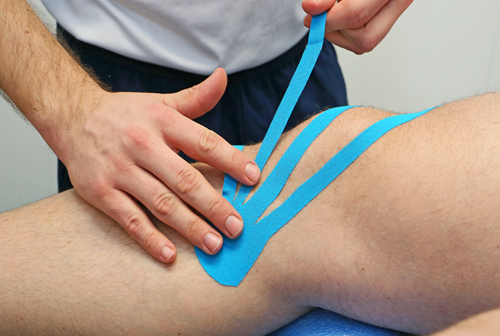Osteitis pubis
What is it?
This is an overuse injury to the area at the front of the pelvis where the two pelvic bones meet at the site known as the symphysis pubis. The consequence is groin pain that is characterized by tissue damage and inflammation often resulting from abnormal stresses applied from the muscle and tendon attachments.
Osteitis pubis commonly occurs due to repetitive asymmetrical load activities such as running, kicking or sit-ups. Sports that this condition is commonly seen in include marathon running, football, hockey and athletics. However it can also occur following a period of inadequate rehabilitation from other groin injuries such as adductor strains or tendinopathies.
What we do?
At The Physiotherapy Academy we will carry out a thorough subjective assessment and objective examination to identify the condition. The pain usually comes on overtime and there are a few classics signs of the condition such as pain over the symphysis pubis and pain on resisted adduction. A thorough physiotherapy assessment is usually sufficient for diagnosis; rarely further investigations may be needed including x-ray, bone scan and MRI to assess the conditions severity.
What the benefits are?
Early diagnosis and treatment may limit the long-term effects of the condition such as bone stress, also preventing any affect to performance. When symptoms become severe you may find yourself limping or ‘waddling’. Early intervention can help prevent these symptoms, which may cause further secondary injuries. Ignoring the symptoms often leads to a long period of rehabilitation.
How can we help?
An appropriate individually tailored physiotherapy program is normally sufficient to heal most patients with osteitis pubis. However a key component to the success of treatment is client compliance and particularly sufficient rest from symptomatic activities. Activities that do not cause symptoms are encouraged to maintain fitness and ensure a speedy recovery.
Tailored physiotherapy may include: a gradual return to activity plan, ice therapy, active rest, flexibility exercises, core stability and strengthening programs, manual therapy, biomechanical correction, return to running program and drills, sport specific drills and activities, muscle release techniques, training technique correction, postural correction, joint mobilisation correction of muscle imbalances, acupuncture/dry needling, neural stretches, Pilates, electrotherapy and education.
What should you do?
Seek early assessment and treatment for the symptoms to prevent long-term effects. This is an extremely difficult condition to treat even for experienced sports physiotherapists like those at The Physiotherapy Academy. It is not uncommon for treatment to take in excess of 3 months if you have had the symptoms for a while. Don’t delay further, call or email today for an appointment.
To arrange an appointment or speak to a physiotherapist, call or email on:
Southend on Sea: 01702 521 042 or info@physioacademy.co.uk
Chelmsford: 01245 254 069 or chelmsford@physioacademy.co.uk





























